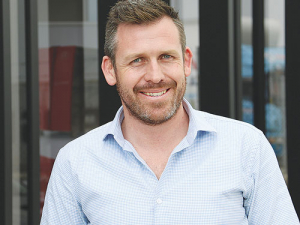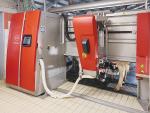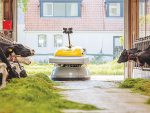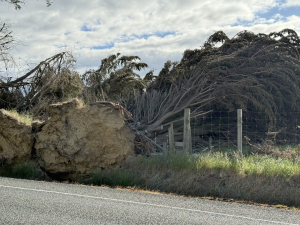The decision by Lely NZ’s parent company Lely to sell its grass machinery division to AGCO and concentrate on dairy technology, particularly robotic milking, has brought about changes in New Zealand and Australia.
Lely Dairy NZ Ltd, formed on August 1, has new premises and a new managing director in Samuel Andersen, who oversees 20 people in NZ and six in Australia. The NZ hub controls accounts, administration and marketing in both countries.
Andersen, a stalwart in robotic milking, reports a marked change in perception over the last two or three years; potential customers are now happy to discuss the idea of robotics, leading to more installations.
“Our Astronaut robotic milking plants are just that -- clever milking machines in a complete package offering tangible benefits,” Andersen says.
The cost of robotics is not prohibitive, he says, particularly for a farmer considering building a new herringbone or rotary complex. Such a plant demands high outlay on buildings, concrete, pipework and milking plant; whereas the modular design of robotics can be easily incorporated into existing structures, and cows voluntarily milking themselves requires very small areas of concrete because the herd need not congregate.
The change to robotics, where cows milk typically 2.5 times per day, has several advantages – fewer workers, increased production -- or the same production from fewer cows -- better herd health, a lifestyle change for the farmer, and most importantly lots of data capture.
“You can’t manage what you can’t measure,” says Andersen. Data collected on production, milk composition, cell count and rumen pH allows users to make informed decisions over long times, rather than the more typical typical herd testing regime that only delivers a snapshot of one day in the life of a cow.
In the case of the Lely Astronaut, a digital dashboard allows TFC (time for cows), with monitoring of key areas, which can be set up to rank cows on measurables already mentioned, effectively producing a ‘league table’ useful for informed decisions.
Is robotic milking the route for everyone? Maybe, says Andersen, but the technology is being accepted by farmers with up to 500 animals. The average installation has four robots, 250 - 300 cows and farm layouts allowing three fresh breaks of grass per day without too much walking for the cows.
On finance, Andersen says the cost of capital-intensive robotic milking plant can be charged against machinery rather than against the farm. This lends itself to a market in second-hand units being established, as seen recently when a North Island farm was sold for housing and the refurbished robots found a second life.


















